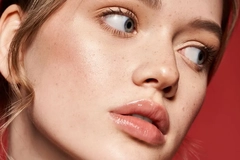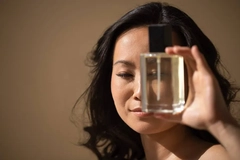K-beauty hits US mass retailers and scales domestic production as tariff clock ticks

Korean beauty brands are gaining ground in US brick-and-mortar retail despite a proposed 25% tariff on South Korean imports. The looming trade measure threatens to disrupt the flow of cosmetic goods across the Pacific.
K-beauty products are moving beyond beauty-specific shelves and are now offered at major discount retailers like Walmart and Costco. This signals Korean cosmetics’ significant transition from a niche import to an everyday basic.
According to Korea International Trade Association, South Korea exported US$3.61 billion worth of beauty products from January to April this year. These numbers edged out the US as the second-largest global cosmetics exporter.
Only earlier this year, South Korea rose to third place globally. The new rankings mark the first time the country has overtaken the US in cosmetic exports.
Unless a deal is struck, the US intends to impose new tariffs on South Korea starting August 1. In the final days before the prices spike, American shoppers have begun buying Korean cosmetics in bulk.
K-beauty brands and retailers, meanwhile, are shifting their strategies to protect supply chains and margins with contract manufacturers by scaling up their domestic US production capabilities.
Mass market appeal
Once seen as a niche online trend, K-beauty is increasingly a standard part of the American beauty retail landscape. What began with selective placements in specialty stores has expanded into widespread availability, including big-box retailers associated with household staples.
Walmart and Costco — traditionally slower to adopt international beauty trends — have both broadened their K-beauty offerings. Target also plans to expand its K-beauty section across all 1,978 of its stores by the end of the year.
.jpg) Target plans to expand its K-beauty section across all 1,978 of its stores by the end of the year.Beauty retail ramp-up
Target plans to expand its K-beauty section across all 1,978 of its stores by the end of the year.Beauty retail ramp-up
The momentum carries through to major beauty retailers such as Sephora, which has doubled its Korean product lineup.
Meanwhile, Korean brands are becoming so prominent at Ulta Beauty that South Korean newspaper, The Chosun Daily, compared the retailer to Olive Young — South Korea’s largest health and beauty chain.
Ulta recently added 13 new Korean brands to its online and brick-and-mortar stores. The offerings include skin care labels such as Medicube, Mixsoon, and Some By Mi and color cosmetics brands such as Tirtir, Kaja, and Rom&nd.
The rollout was made possible through a partnership with Landing International, operator of the K-Beauty World platform. “We’ve featured Korean skin care before, but now customers can find a wider range of categories and price points,” says Kaitlin Rinehart, VP of merchandising at Ulta Beauty.
This growing normalization of K-beauty in US stores is also opening the door for Korean retailers to enter the market directly. Olive Young has announced plans to establish a brick-and-mortar presence in the country, starting with a Los Angeles location, California.
The move suggests that the once export-led model may now be transitioning into a direct, on-the-ground presence in the US.
Tariff tensions spur panic buying
While the retail momentum is accelerating, it is taking place under the cloud of upcoming trade restrictions. In early July, US President Donald Trump warned that unless a trade agreement is reached, the country would impose a 25% tariff on nearly all South Korean and Japanese imports, including cosmetics, starting August 1.
Since the announcement, some US beauty shoppers have started stockpiling Korean cosmetics, fearing price increases or product shortages. The behavior has been particularly evident on social media, where influencers are openly encouraging followers to buy in bulk while prices remain stable.
Posts showcasing large hauls of toners, sunscreens, and serums have proliferated under hashtags like #kbeautyhaul and #tariffprep.
.jpg) American consumers fearing price increases are stockpiling Korean beauty products.While the consumer response underscores the loyalty K-beauty has cultivated, it also reflects growing unease in the market. The potential impact of tariffs is significant for smaller brands operating with thin margins.
American consumers fearing price increases are stockpiling Korean beauty products.While the consumer response underscores the loyalty K-beauty has cultivated, it also reflects growing unease in the market. The potential impact of tariffs is significant for smaller brands operating with thin margins.
Liah Yoo, founder of US-based K-beauty brand KraveBeauty, recently told The New York Times that shifting trade policies create uncertainty for business owners and make it difficult to plan ahead, notably because the brand’s products are formulated in South Korea.
She says affordability has long been a key strength for Korean cosmetics, and brands that rely heavily on price competitiveness could be most affected by the tariffs.
However, Yoo adds that KraveBeauty does not plan to raise prices immediately and will monitor how the situation develops in the coming months.
Made in America
With looming tariffs, several Korean manufacturers are strategizing to minimize their impact by localizing supply chains. Yesterday, Kolmar Korea, a large South Korean original design manufacturer (ODM), announced it has completed construction on its second manufacturing facility in the US.
A company spokesperson says, “This is the first time a Korean cosmetics company has directly built a production facility in the US rather than acquiring one.”
“We’re ready to support K-beauty brands looking to enter the US market without tariff concerns, as well as global customers aiming for North American, European, and South American markets. Our collaboration ecosystem is poised for rapid expansion.”
The 17,805-square-meter plant in Pennsylvania will increase Kolmar US’s total capacity from 180 million units of annual production to 300 million.
With skin care and sun care products remaining two of K-beauty’s most popular categories in the US, the factory is FDA-certified for over-the-counter sunscreen production and built with automation and AI-powered quality control systems.
Kolmar says the facility replicates the standards of its Sejong plant in Korea, including manufacturing zones, logistics flows, and automated systems.
.jpg) Kolmar Korea has announced it has completed construction on its second manufacturing facility in the US.The move is part of a larger production shift across the industry. Cosmax, another leading ODM, has also expanded capacity by 30% this year, while its competitor Cosmecca Korea has increased by 21%.
Kolmar Korea has announced it has completed construction on its second manufacturing facility in the US.The move is part of a larger production shift across the industry. Cosmax, another leading ODM, has also expanded capacity by 30% this year, while its competitor Cosmecca Korea has increased by 21%.
All three firms, Kolmar, Cosmax, and Cosmecca, posted record second-quarter profits in 2025, driven by growing global demand and the expansion of small and mid-sized Korean labels abroad.
According to estimates from South Korean finance firm Hana Securities, Kolmar Korea is expected to post approximately US$60 million in operating profit on US$539 million in sales in Q2. Cosmax is estimated to reach US$46 million in operating profit on US$472 million in sales.
Despite tariff uncertainty, strong consumer demand makes K-beauty’s retreat from the US market unlikely. However, the brands’ ability to navigate these challenges may hinge on how effectively they adapt to changing market conditions.












